Clash Of The Touch-Screen Titans: BlackBerry Storm vs. T-Mobile G1 vs. Apple iPhone
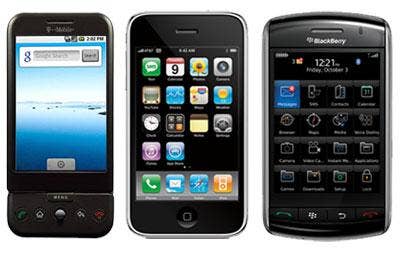
Touch screen devices have become all the rage. They're pretty, offer a wide screen and pack enough high-speed connectivity to download content in a flash. Research In Motion (RIM) Ltd. this week joined the touch-screen party with the BlackBerry Storm. But the Storm is in elite company, with the recently announced Google Android-based T-Mobile G1 and the touch-screen trailblazer the Apple iPhone 3G. All of them have some similarities, but there are also some key differences. Here, we pit the three touch-screen goliaths " BlackBerry Storm, T-Mobile G1 and Apple iPhone 3G -- against each other in a head-to-head-to-head match up to see how the devices stack up in 14 different categories.
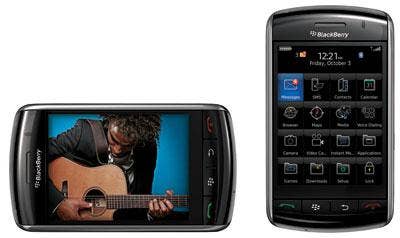
Camera and video capabilities are becoming more and more important for smart phone buyers, especially as they become more consumer-focused devices. The Storm, G1 and iPhone 3G all offer cameras. But one device does it better than the others.
The Storm ties in a 3.2-megapixel camera with video capabilities, variable zoom, auto focus and a flash that also provides continuous lighting while recording video. The T-Mobile G1's camera is also 3 megapixels. The G1 offers auto focus, but lacks zoom and video capabilities. And the iPhone 3G, clocks in with a puny 2 megapixel camera that also doesn't capture video.
When it comes to the camera, the BlackBerry Storm takes the win, and it wasn't a photo finish.
Winner: BlackBerry Storm (pictured)
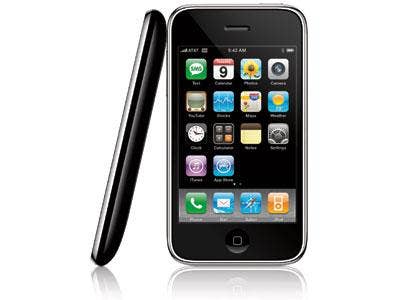
With all of the multimedia capabilities being wrapped into smart phones these days, users require a good chunk of memory to store songs, music and data. All three touch screen titans offer an adequate amount, but the devil is in the details.
The Storm offers 1 GB of onboard memory storage and a microSD/SDHD memory card slot to support up to 16 GB of additional storage. The G1 comes to the table with a 1 GB preloaded microSD card, which is expandable up to 8 GB. The Apple iPhone 3G starts at a base 8 GB for the cheaper model, while for $100 more doubles that to 16 GB.
When it comes to storage, the Apple iPhone 3G saves the day, offering the largest amount for multimedia-crazed gadget lovers to save their stuff.
Winner: Apple iPhone 3G (pictured)
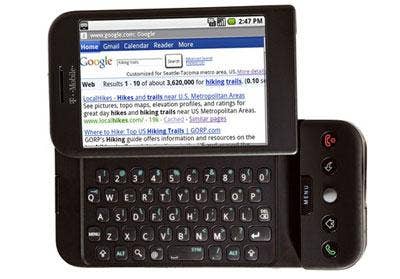
Whether it's for documents, text messages, emails or something else, smart phones must offer an easy way to get the message out and a good, easy-to-use keyboard is, well, key. But having a touch screen often throws a little bit of a stick in the spokes, not offering the best environment for firing off a quick message.
The BlackBerry Storm and Apple iPhone 3G both offer touch screen-based QWERTY keypads. The Storm ups the ante by also offering a SureType mode. Both also support multi-touch input. It also brings a "Clickable" screen into the fold. The screen depresses slightly when tapped and clicks to let the user know the command has gone through, making it feel like they're really typing.
While the T-Mobile G1 lacks multi-touch on the screen, it does slide open to reveal a full, physical QWERTY keyboard, complete with shortcut keys to jump between applications. The physical keyboard makes the G1 the best bet if typing is to your liking.
Winner: T-Mobile G1 (pictured)
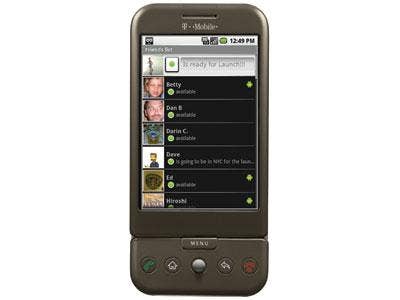
Pricing hasn't yet been announced for the BlackBerry Storm, but it would be wise for RIM to keep it in the sub-$200 range. Why? Because the T-Mobile G1 is available for pre-order for just $179 with a two-year service contract and the Apple iPhone 3G, touted for its affordability, comes in at $199 for the 8 GB model and $299 for the 16 GB, with a two-year contract, of course.
Then the data plan comes into play. The T-Mobile will offer two data plans for the G1, a $35 plan with unlimited Web email and messaging and a $25 that offers unlimited Web and email and limited messaging, on top of the monthly voice plan. For the iPhone, AT&T offers an unlimited voice, data and visual voicemail plan for about $130, with other customizable plans available that offer data for around $30. And for the BlackBerry Storm data plans have not yet been announced, but Verizon offers data plans for around $40, on top of monthly service charges.
Based on the price of the device and service -- and what you get for the money -- the T-Mobile G1 is the clear victor.
Winner: T-Mobile G1 (pictured)
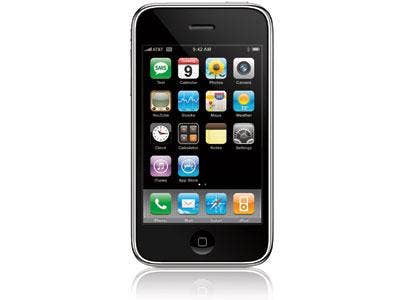
The trio of touch-screen smart phones -- the BlackBerry Storm, T-Mobile G1 and Apple iPhone 3G -- all utilize their carriers' next-generation 3G networks. The Storm uses Verizon Wireless', the G1 T-Mobile's and the iPhone AT&T's. Problem is, T-Mobile's 3G network isn't quite ready nationwide just yet, though the carrier vows to have more than 20 metropolitan areas up and running by the device's Oct. 22 official launch date. While iPhone has an exclusive deal with AT&T, the iPhone 3G's release was hindered by some 3G hiccups, with users complaining the data rates weren't yet up to snuff. Word is that's all been taken care of though. The iPhone supports UMTS/HSDPA/GSM/EDGE.
So far the Storm has yet to prove itself on the 3G network, so that's a pretty easy elimination, though it promises support for UMTS/HSPA/GSM/GPRS and dual-band CDMA/EV-DO.
All-in-all, the network nod goes to the iPhone 3G. It started the 3G touch screen revolution and regardless of issues has remained on top. Since fixing some of the initial issues, complaints have dropped dramatically.
Winner: Apple iPhone 3G (pictured)
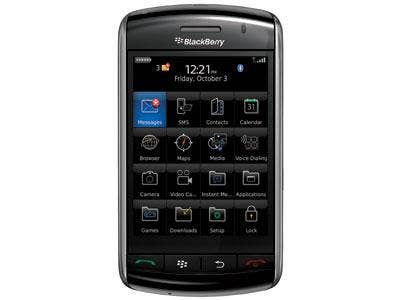
BlackBerry set the gold standard for mobile email and messaging. Throughout its 10-year history, BlackBerry and mobile messaging have been synonymous. And with the Storm, BlackBerry continues its recent trend of giving not just corporate users, but consumers, access to their email and messaging applications on the go. The Storm works with BlackBerry Enterprise Server for Microsoft Exchange, IBM Lotus Domino and Novell GroupWise, and it also integrates with existing corporate and personal email accounts. On the instant messaging side, the Storm supports most major consumer and corporate IM applications.
The G1, for all of its functionality, falls a little short on the email side. The device features no native integration with Exchange, though application developers have worked around that problem. It does offer push access to Gmail and access to other POP3 and IMAP email accounts. It also supports many consumer instant messaging platforms.
And the iPhone, which promises to make email look and work just like it does on a computer, supports popular email servers and providers like MobileMe, Microsoft Exchange, Yahoo Mail, Google Gmail and AOL, along with most industry IMAP or POP mail systems.
Far and away, the BlackBerry Storm wins out the email category, with its legacy for corporate email excellence and its ability to access a host of other consumer-oriented email accounts.
Winner: BlackBerry Storm (pictured)
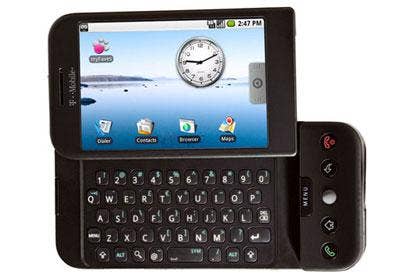
Cellular access is one thing, but smart phones now carry the burden of having to have multiple forms of connectivity. Both the T-Mobile G1 and Apple iPhone offer access to Wi-Fi, while the Storm does not. All three also have some form of GPS capabilities, though the T-Mobile G1 takes it one step further offering traffic, satellite and street-level views from anywhere.
The lack of Wi-Fi knocks the Storm out of the running, and while the iPhone and G1 are pretty much on par, the nod in this category goes to the G1 for its innovative use of GPS along with its Wi-Fi integration to supplement 3G connectivity.
Winner: T-Mobile G1 (pictured)
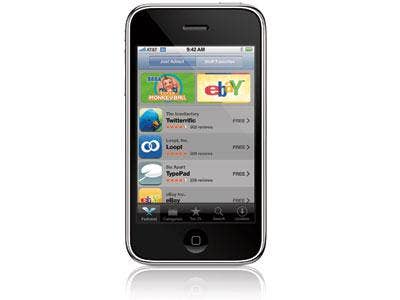
When it comes to touch-screen handhelds, the display is everything. Whether searching the Web, writing an email or watching video, it's a must to have a high-resolution crystal clear screen. All three touch-screen titans offer a nice quality screen, though there are some slight differences.
First, the BlackBerry storm offers a 3.25-inch display with 480 x 360 resolution at 184 ppi. The transmissive TFT LCD offers user selectable font size and has light sensing features. The iPhone, offers another quarter-inch with a 3.5-inch diagonal widescreen with 480 x 320 resolution at 163 ppi. And the G1 has a 3.2-inch HVGA with 480 x 320 resolution.
When it comes to screen, often bigger is better. The iPhone 3G has proven itself to offer crisp and clear viewing and navigation, making it the display leader.
Winner: Apple iPhone 3G (pictured)
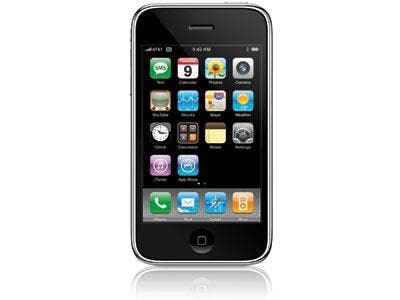
Another key to survival in the ever-changing smart phone market is advanced multimedia capabilities, and the three latest touch screen chiefs are no exception. The BlackBerry Storm offers an advanced media player with support for pretty much every video and audio format out there; MPEG4 Part 2 Simple Profile, H.264, WMV for video and MP3, AAC, AAC+, eAAC+, WMA, WMA ProPlus. It also brings a 3.5 mm stereo headset jack and support for Bluetooth audio profile to the mix.
The iPhone makes no bones about its music and video support. On the video side, it also supports every video and audio format known to man and integration with the iTunes music store and Apple's now-iconic iPod earbuds, the iPhone 3G is a multimedia titan.
The G1, which integrates with Amazon's MP3 store, also supports a host of music and video formats and features native support to view mobile YouTube videos.
When it comes to multimedia, Apple takes the cake. The iPhone evolved out of the iPod, which garnered a great deal of success, and as Steve Jobs continues to update the portable music player, there's no telling what he has in store for the next generation of iPhones.
Winner: Apple iPhone 3G (pictured)
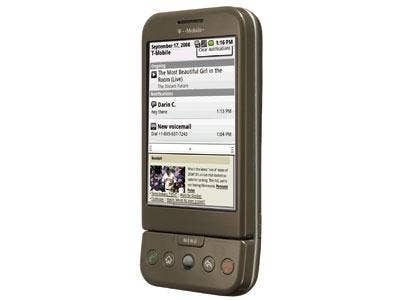
The Apple iPhone has the AppStore, a marketplace where developers can build and sell apps for users to download, for a fee, to their device. They range from the useful " world clocks " to the absurd " a cowbell that dings with a screen tap. Apple, however, likes to have its hands in the cookie jar and takes a fee from the developers and has control over which applications make it into the AppStore to be consumed by the general public.
The G1 takes a more hands-off approach through the Android Market, the open source Linux Google Androids own application depository where third-party developers can create applications and offer them to users " for free or for a fee " without Google taking a cut or even limiting which apps get in and which don't.
RIM, at the same time the Storm was announced this week, also announced the availability of new developer tools for creating and testing mobile-savvy applications for the Storm, the BlackBerry Bold and the BlackBerry Pearl Flip. The tools include new versions of the BlackBerry Java Development Environment that enable development of mobile application that work both in touch-screen and keyboard environments.
So far, the G1 leads the pack when it comes to third-party application integration, with Android's hands-off approach and freedom for developers, allowing them to unleash creative and innovative apps on the masses with little to no hindrance.
Winner: T-Mobile G1 (pictured)
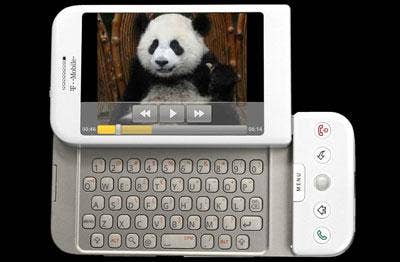
Another staple of the touch-screen revolution has become high quality browsers that give users the feel of the true Web on their mobile device. Users are looking for the same Internet experience they'd get on a desktop, so device makers are pulling out all of the stops to help that translate to smart phones.
The iPhone 3G ties in a Safari browser that works via EDGE, Wi-Fi or 3G. Users can zoom in and out with a tap or a pinch and view Web sites in both portrait or landscape mode. A quick rotation of the device and the Web site being viewed rotates too. The iPhone's browser also lets users create a home screen icon, called a Web clip, for their favorite Web sites so they can be accessed with just a tap.
The G1 has a full HTML browser with onscreen controls to zoom in and out, which is a different from the iPhone's pinch method. It allows users to open multiple pages at once. Both iPhone's Safari and the G1's browser, which is similar to a mobile version of Google Chrome, are based on Webkit, an open source browser. The G1 also offers one-click Google search.
The BlackBerry Storm's HTML browser is also expected to support flip functions to move the screen, cut and paste and copying with the slide of a finger. It's also expected to let users click through URL links and a host of other functions.
Right now, the G1 promises the best mobile internet experience, despite its close similarities to the iPhone. Time will tell if it stands up, but if it's loosely based on Chrome, it has the potential to be the more dominant touch screen browser.
Winner: T-Mobile G1 (pictured)
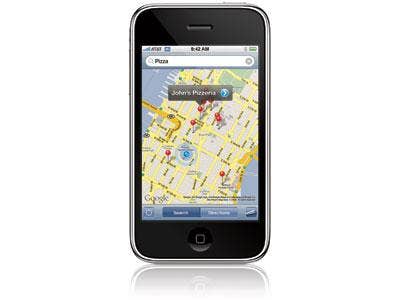
The whole point of a mobile device is to have access to information on the go. If the battery conks out, a smart phone is nothing more than an expensive paperweight in your pocket.
The BlackBerry storm offers 15 days of standby time and about 5.5 hours of talk time, though that doesn't account for time spent surfing the Web, sending emails or listening to music.
T-Mobile's G1 promises up to 130 hours -- a little more than 5 days -- of standby time and up to 5 hours of talk time. And the iPhone 3G goes above and beyond, offering up to 5 hours talk time on 3G or up to 10 hours on 2G with standby time of up to 300 hours, or 12.5 days. For Internet use, the iPhone 3G offers up to 5 hours on the 3G network and up to 6 hours on Wi-Fi. It also promises up to 7 hours of battery life for video playback and up to 24 hours for audio playback.
In this case, the Apple iPhone 3G lays it all out on the table, setting user expectations for various scenarios. For that, the iPhone 3G takes the battery life category.
Winner: Apple iPhone 3G (pictured)
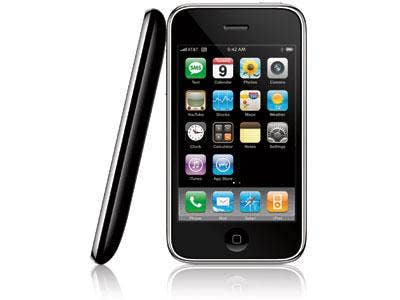
Size matters, especially when you carry a device in your pocket or on your hip. The BlackBerry Storm measures 4.43 inches by 2.45 inches by 0.55 inches and weighs in at 5.5 ounces. The Apple iPhone 3G, the slimmest of the trio, clocks in at 4.5 inches by 2.4 inches by 0.48 inches, a bit taller than the Storm, and weighs 4.7 ounces. And the T-Mobile G1 is the bulkiest of the bunch, measuring 4.6 inches by 2.16 inches by 0.62 inches and weighing 5.6 ouches, with the full physical keyboard adding some extra heft.
When it comes to weight and measures, the iPhone takes the cake, but probably doesn't eat it to maintain its trim figure.
Winner: Apple iPhone 3G (pictured)
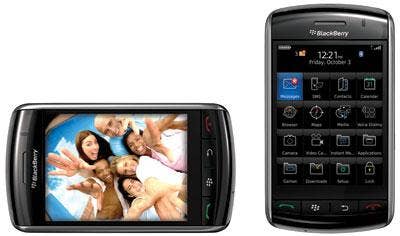
To survive in a corporate environment, smart phones must offer access to business documents.
The BlackBerry Storm comes preloaded with the DataViz Documents to Go suite for editing Microsoft Word, Excel and PowerPoint files directly on the handset. The G1 currently lets users view Office documents and attachments, albeit in a limited fashion, but offers no support for editing Microsoft documents. The iPhone 3G also lets users view, but not edit, a host of documents, including the Microsoft Office suite. Third-party applications, however, are available to enable editing.
As expected, when it comes to corporate uses, the BlackBerry Storm rises to the top, enabling native viewing and editing of documents from the device.
Winner: BlackBerry Storm (pictured)
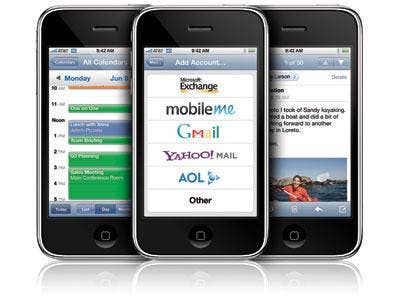
The Apple iPhone 3G (pictured). Steve Jobs and his crew got it right with the latest generation of its soon-to-be iconic touch-screen smart phone. The iPhone took 6 out of the 14 categories, beating out the T-Mobile G1, which scored 5 points and the BlackBerry Storm, which came out of battle with 3 points overall.
With the iPhone 3G, Apple has established itself as the leader, targeting the consumer with advanced Web browsing and multimedia capabilities while adding in just enough corporate sass to keep C-level executives connected while on the go.
Granted, the iPhone 3G has been on the market now for three months and the T-Mobile G1 isn't expected to drop officially until Oct. 22. Currently, there is no set release date for the BlackBerry Storm. It's possible that once these devices enter the wild and get into users hands, the results could be different, but until they prove themselves, the Apple iPhone 3G is the true touch-screen titan.
Final scores: Apple iPhone 3G -- 6; T-Mobile G1 -- 5; BlackBerry Storm -- 3